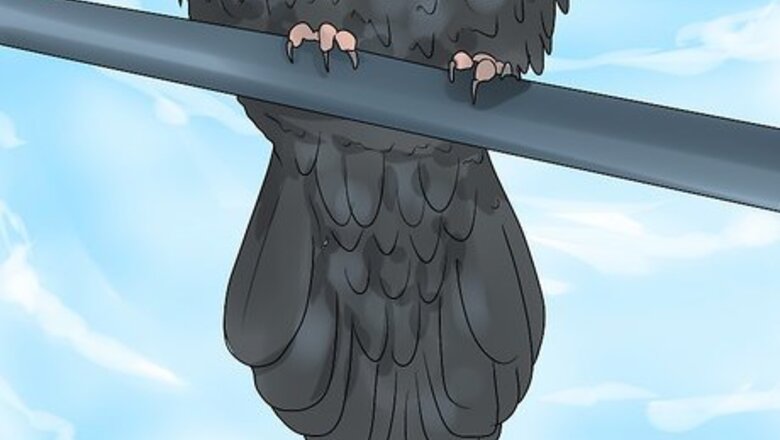
views
Determining if the Bird is a Raven

Check for a wedge-shaped tail. Look at the tail feathers as the bird flies overhead. If the feathers taper off at the end and form a wedge, it's a raven. This is typically the easiest way to determine which bird it is.
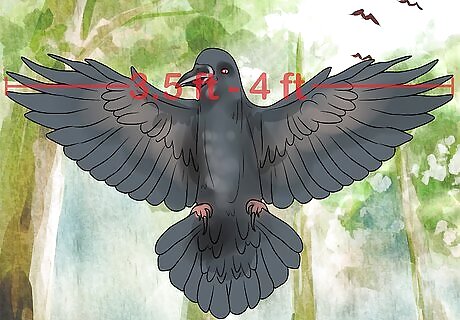
Look for a 3.5–4 ft (1.1–1.2 m) wingspan. While ravens and crows are both black, they differ in size significantly. Ravens are typically much bigger than crows, with a larger body and wingspan. In fact, typically ravens are twice the size of crows. On average, ravens are 24–27 in (61–69 cm) long.
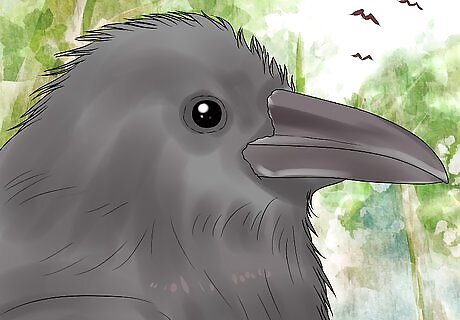
Look for a large head and bill. Ravens usually have a much larger head than a crow, with a long, curved bill. Look for a bill that's equal to or larger than the bird's head. If it has a huge bill, it's most likely a raven.

Check if the bird is alone or in a pair. Ravens usually eat and fly solo or with one other bird, while crows usually fly around with a larger group of birds. Look at the bird and see if it is flying around with other birds or whether it solo or in a pair. Two or more ravens grouped together is called an "unkindness."

Look for glossy and fluffy feathers around the bird’s neck. Ravens have large feathers with a blue, purple, and green sheen. The feathers around a raven’s neck are usually fluffy and beard-like, unlike the feathers around a crow’s neck which are usually more smooth and shiny.
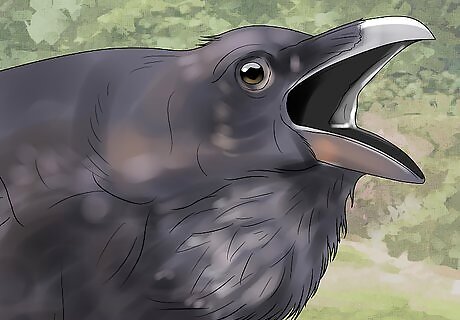
Listen for a croaking noise. Ravens make a low-pitched and guttural croak or noise that sounds like “gronk-gronk,” while crows make a more traditional “cawing” noise. If the noise that the bird is making is a lower pitched croak, it’s likely a raven. Listen to raven calls on Youtube to help you identify the noise.
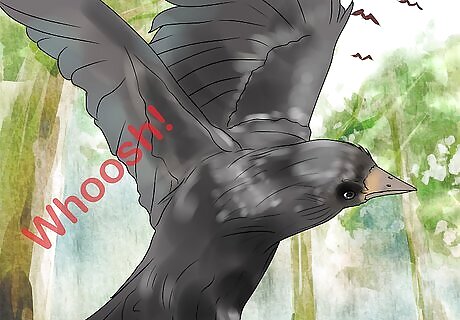
See if you can hear a “whooshing” noise as the bird flies. Because of the added wingspan, raven’s will often make a “whooshing” noise when they fly. Take notice of whether you can hear the bird when it takes flight. Since crows are smaller, they are typically silent when they fly.
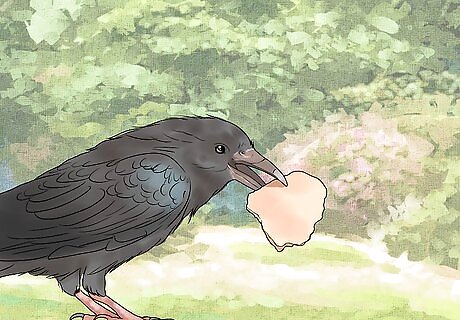
Determine whether the bird is in a rural area. Ravens are scavengers and typically feed on animals found in rural or wooded areas. The birds usually stay away from cities and urban areas. If you’re out in the countryside, the bird is likely a raven.
Identifying Crows
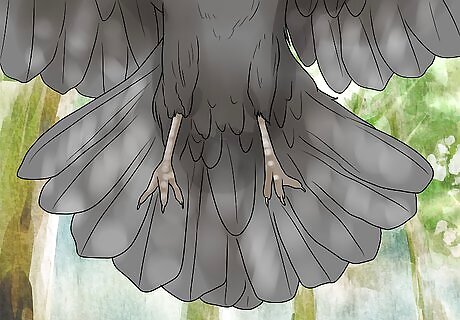
See if the tail feathers look like a fan. The tail feathers of a crow are blunted and straight, like a fan. Their tail feathers are usually shorter than that of a raven and look much different than the pointed or wedged tail feathers of a raven.
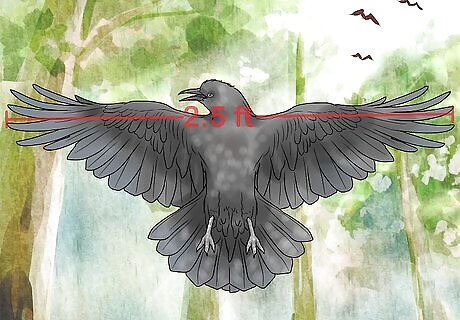
Look for a 2.5 ft (0.76 m) wingspan. Look at the bird's wingspan as it flies overhead. The average American crow has a 2.5 ft (0.76 m) wingspan and is about 17 in (43 cm) long. Crows are smaller birds that are usually around the same size as a pigeon.
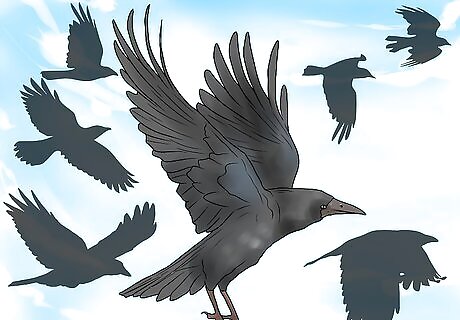
Determine if several birds are grouped together. Crows often fly around in larger groups rather than being solo or in a pair. If you see a group of birds flying or eating together, there’s a good chance they are crows. If the bird is solo or in a pair, it's probably not a crow. A group of crows is called a "murder."
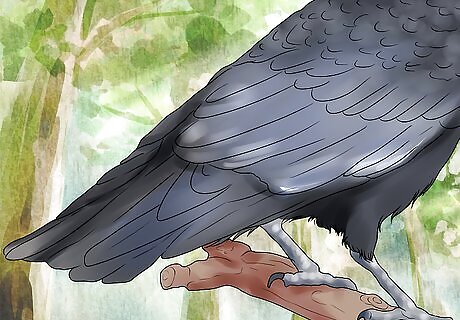
Look for shiny and glossy feathers. Crows have slight shades of purple and blue in their feathers. Look at the feathers of the bird and determine whether they look shiny or wet. Unlike ravens, crows do not have fluffy feathers around their neck.
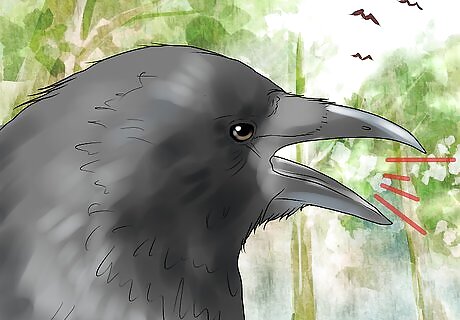
See if you can hear a cawing noise. Crows make a high-pitched cawing sound. Usually, a crow will call out repeatedly and other crows will often join in. This differs from the raven’s low-pitched croaking noise.
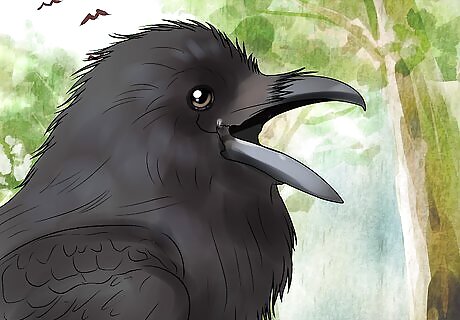
Listen for a loud clicking noise when crows are defending their territory. This clicking sounds less like a bird call and more like someone clicking with their tongue. Sometimes, more than one crow will join in on the clicking noises. Ravens do not make these noises.
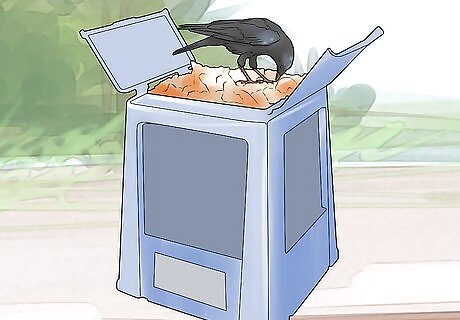
Determine if the bird is in an urban environment. Crows are often found in cities or urban environments. If you see the bird in the city that resembles a crow or raven, it’s most likely a large crow rather than a raven. If you live in the city or an urban environment, crows will typically eat out of the garbage or scavenge thrown-out food.

















Comments
0 comment